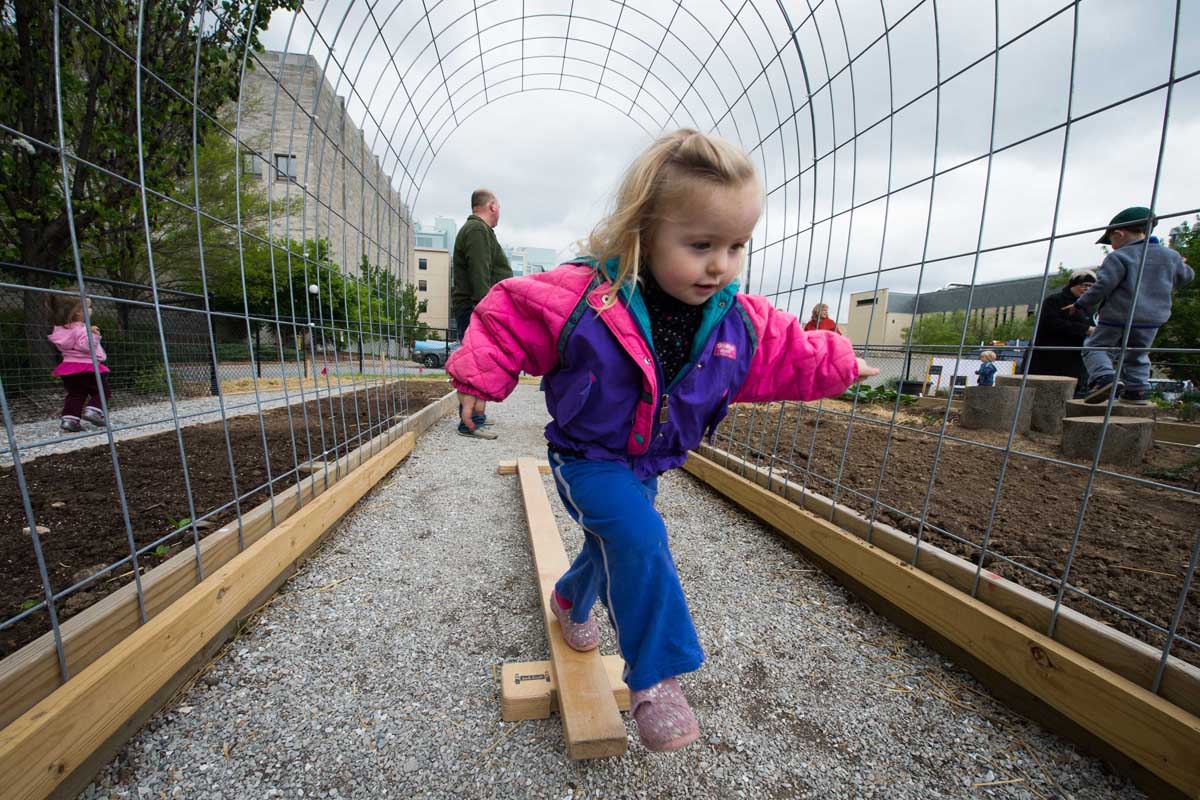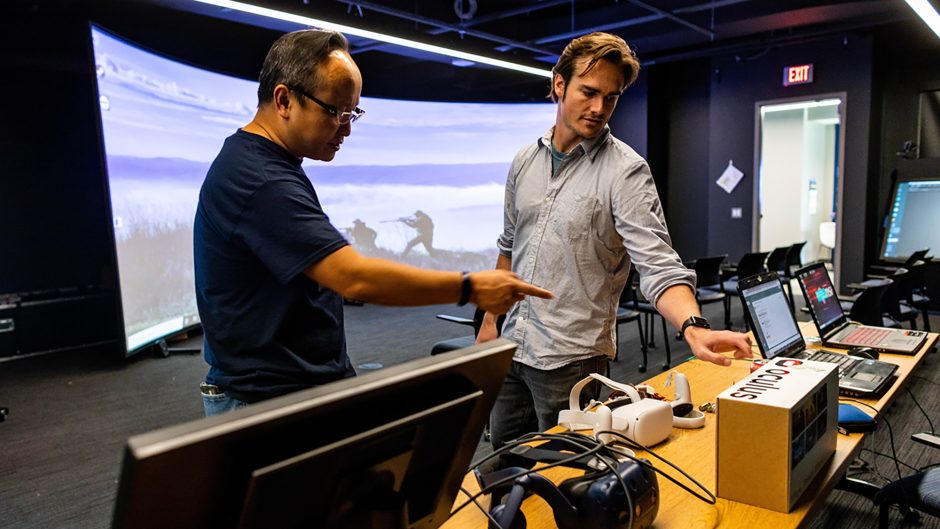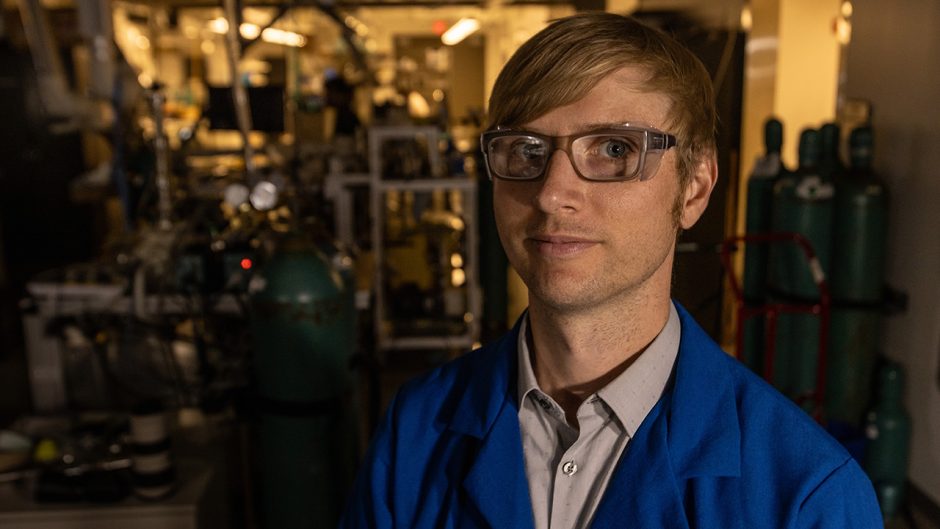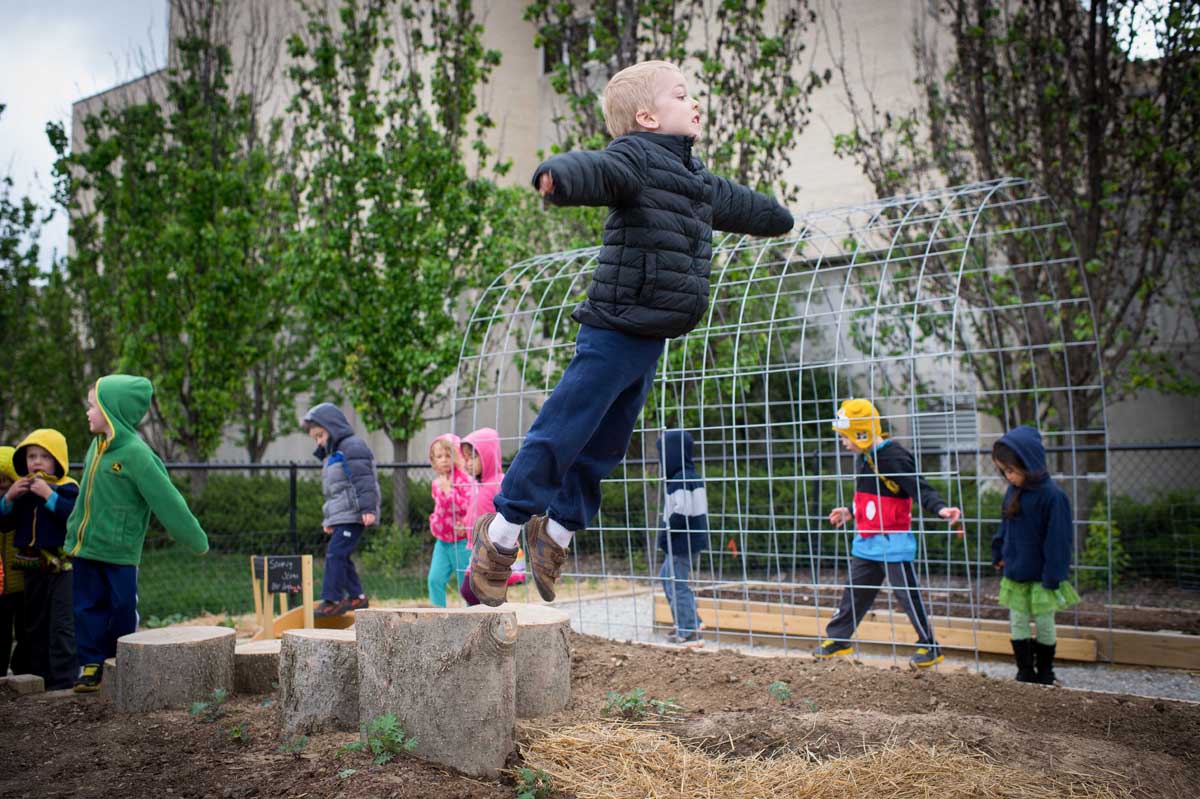
Stepping stumps in the new Children's Learning Garden help preschoolers' gross-motor development. Arranged among the stumps are small red Russian kale plants, which operate as "hot lava" in the children's play and become a nutritious snack after harvest.
Preschoolers at Mizzou’s Child Development Lab are getting their hands dirty. On May 1 the Children’s Learning Garden opened behind Curtis Hall with a ribbon cutting and dedication ceremony. Created in partnership with USDA-Agricultural Research Services and designed by MU Landscape Services, the garden is a gift of alumna Marlese Gourley and her husband, Robert Gourley.
The garden operates as an outdoor classroom. Child Development Lab kids learn about agriculture by planting, caring for and harvesting plants, and they learn about nutrition by helping to plan and prepare meals using the vegetables they’ve grown. Mizzou students in the Department of Human Development and Family Studies earn course credit for working with children on gardening and cooking activities. More about the garden »
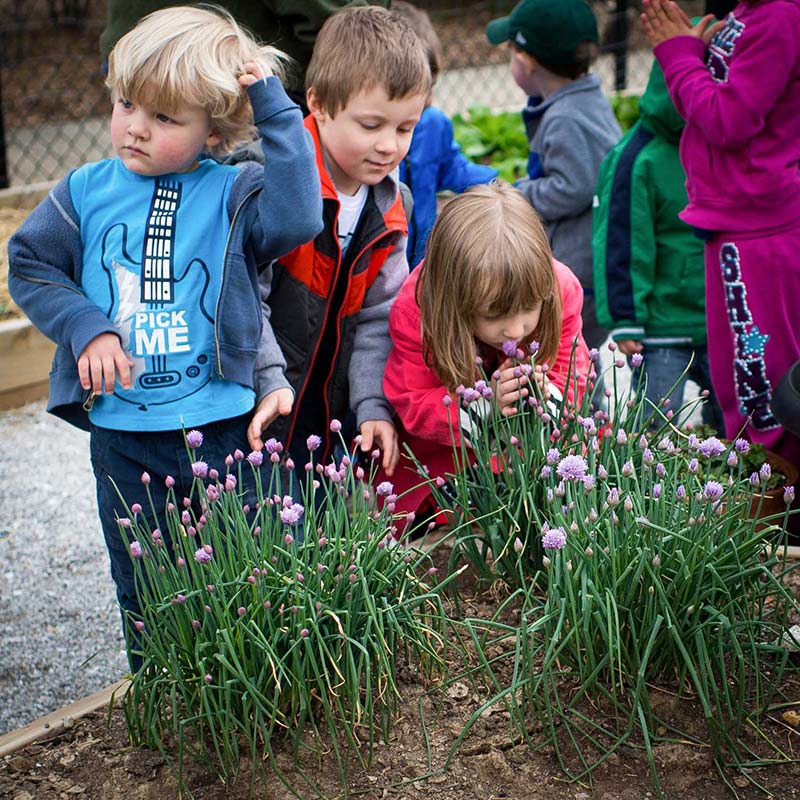
Children smell the chive flowers in the sensory and herb garden. Chives produce vibrant purple blossoms in the spring, and they are both visually and aromatically engaging for the children. Preschoolers are encouraged to practice gently touching and smelling the plants.

Benefactors Marlese and Robert Gourley (seated on the bench) meet children, teachers, faculty and researchers from the Child Development Lab.

A gift from Mizzou alumna Marlese Gourley and Robert Gourley, of Lee's Summit, Missouri, funded the garden. A plaque was placed in the garden in their honor.
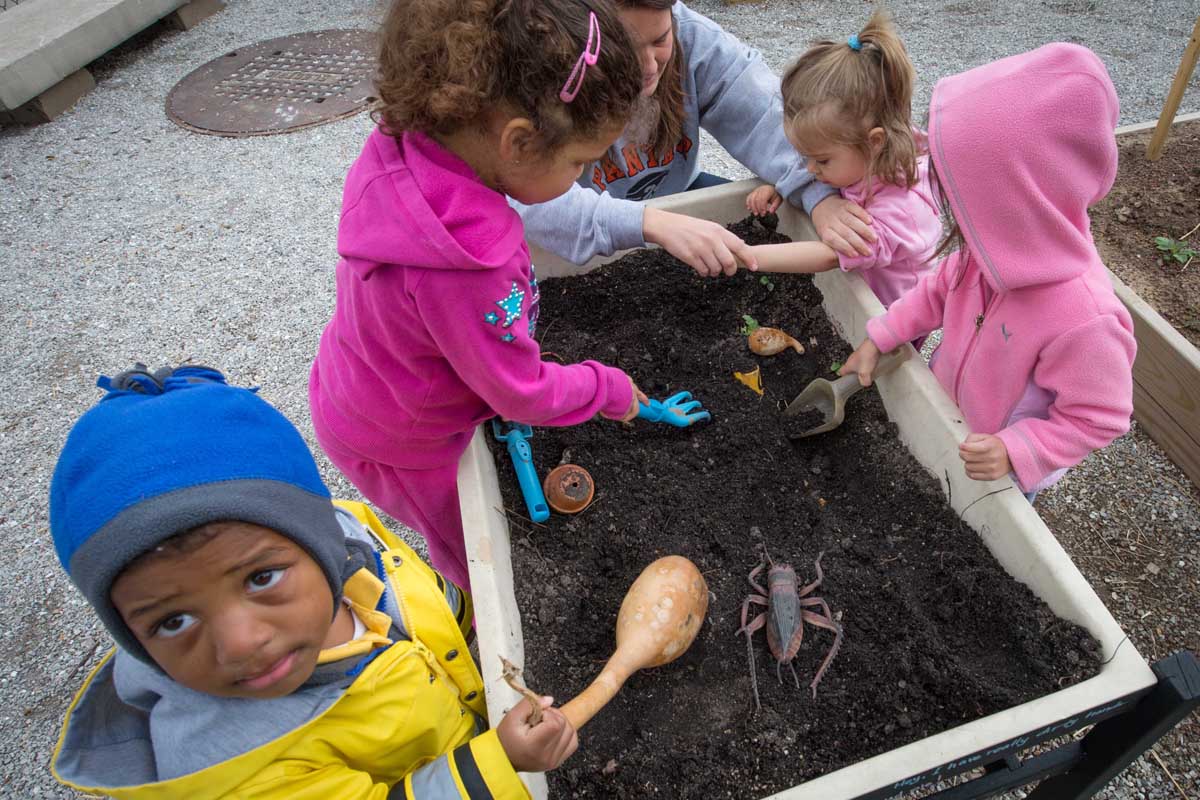
Children explore the sensory table. Here they can use garden tools to dig in the dirt and look for worms or roly polies.

